
|
A2-B1 Present perfect practise using just, yet & already 2
Learning the present perfect tense with just, yet, and already is essential because these time adverbs allow students to express recent actions, expectations, and accomplishments clearly and concisely. Just helps highlight very recent actions (e.g., I have just finished my homework), making communication precise and current. Yet is vital for asking...
Level: elementary
Age: 10-100
Type:
Downloads: 109
|
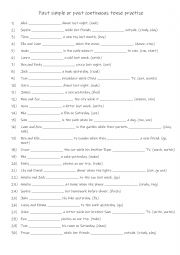
|
A1 Past simple or past continuous tense practise
Students read the sentences, then using key words to decide which tense is required to complete the gap-fill with the correct tense. Answers on page 2
Level: elementary
Age: 8-100
Type:
Downloads: 116
|
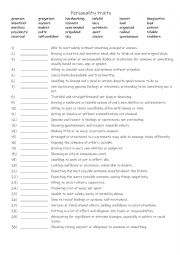
|
B1-B2 30 Personality traits
Students familiarise themselves with the 30 adjectives then read the definitions. They write the word next to the definition. After the worksheets have been checked, this worksheet could also be used for a speaking reinforcement activity. Students could say what they look for in a partner, or to describe themselves or someone they know.Answers on p...
Level: intermediate
Age: 10-100
Type:
Downloads: 117
|
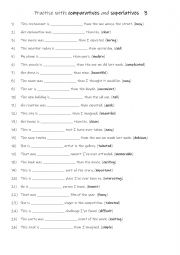
|
A1+-A2 Practise with comparatives and superlatives 3
Students read the sentence and complete the sentence with the correct form of the given adjective in (). Each form is used 13 times! Answers on page 2.
Level: elementary
Age: 8-100
Type:
Downloads: 102
|
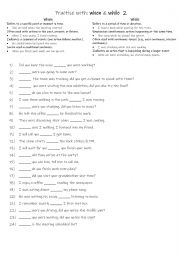
|
Practise with: when & while 2
First, students need to familiarise themselves with the 2 words and their use. Then they read the sentences to work out which one is needed to complete the gap-fill. Each word is used 12 times! Answers on page 2
Level: elementary
Age: 8-100
Type:
Downloads: 101
|
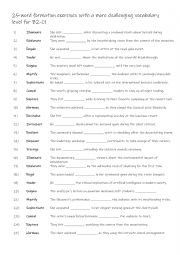
|
25-word formation exercises with a more challenging vocabulary level for B2-C1
Word formation exercises improve learners� understanding of how words are constructed. This includes recognizing prefixes, suffixes, roots, and combining forms. Such knowledge helps learners break down complex words into understandable parts, making it easier to grasp their meanings.This worksheet is suitable for students studying IELTS Band 6-6....
Level: advanced
Age: 14-100
Type:
Downloads: 111
|

|
A1+ A2 Practise with present simple-present continuous-present perfect simple- past simple-past continuous- will future & going to 1
Students should learn to practise tenses like the present simple, present continuous, present perfect simple, past simple, past continuous, will future, and going to because they are essential for expressing actions in different time frames. These tenses help students describe routines, ongoing events, past experiences, and future plans clearly and...
Level: elementary
Age: 8-100
Type:
Downloads: 122
|
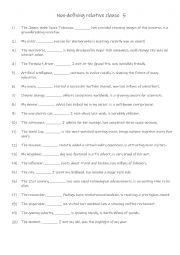
|
A2-B1 Non-defining relative clause 5
Students complete the gap-fill with the correct word. Answers on page 2.
Level: elementary
Age: 9-100
Type:
Downloads: 105
|
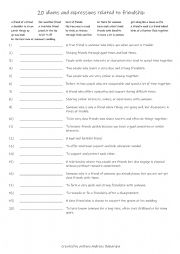
|
20 Idioms and expressions related to friendship B2-C1 (1)
Learning friendship-related idioms helps students improve their communication by making their language sound more natural and fluent. It broadens their vocabulary, allowing them to express emotions and relationships more effectively. These idioms also deepen cultural understanding and foster stronger connections, as they reflect shared social value...
Level: intermediate
Age: 12-100
Type:
Downloads: 115
|
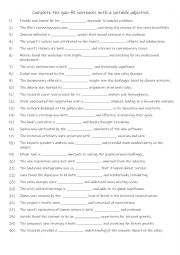
|
C1-C2 Complete the gap-fill sentences with a suitable adjective.
Students read the sentences and complete the gap-fill using a suitable adjective. This worksheet is only suitable for advanced students due to the vocabulary used.However; the teacher could pre-teach the 30 adjectives, then it would be suitable for B2 level students. A speaking reinforcement activity could be used with most of the statements for st...
Level: advanced
Age: 14-100
Type: worksheet
Downloads: 141
|












